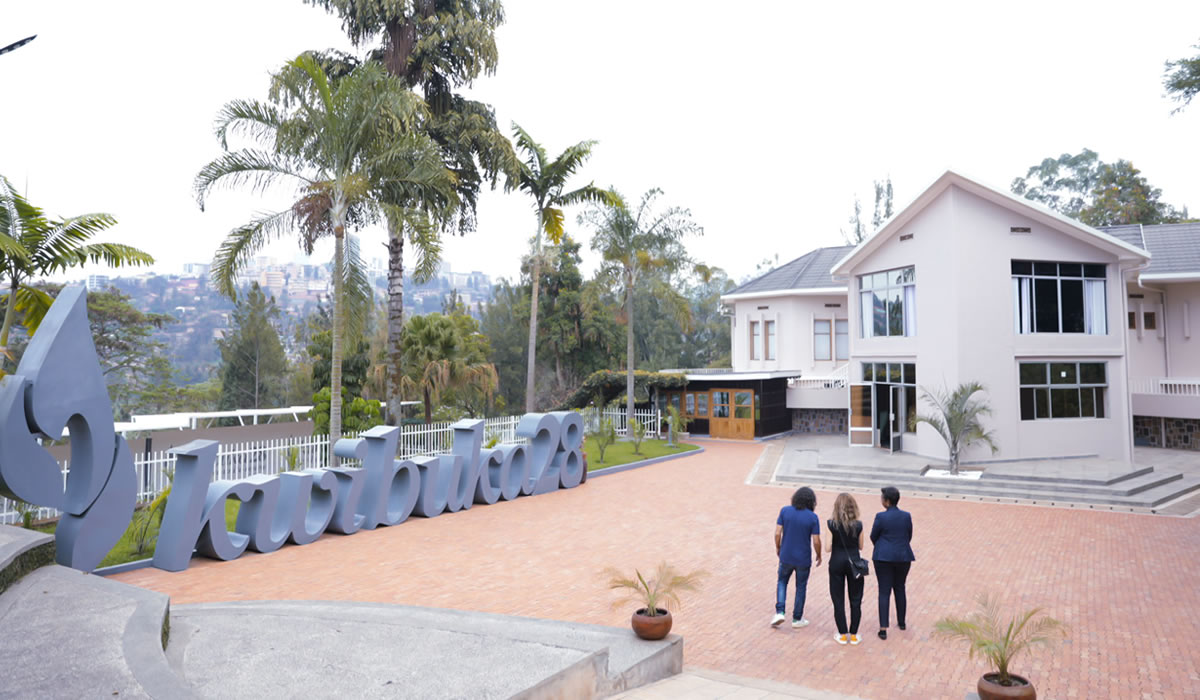Rwanda offers travellers a unique blend of natural beauty, wildlife, and culture. From the misty…
Kigali Genocide Memorial

The Kigali Genocide Memorial is one of Rwanda’s most significant historical sites, offering visitors a profound and moving insight into the country’s tragic past and remarkable recovery. Located in the capital city, Kigali, the memorial stands as a tribute to the victims of the 1994 genocide against the Tutsi, during which over 800,000 people lost their lives in a span of just 100 days. Beyond commemorating the lives lost, the memorial serves as an educational center, promoting peace, reconciliation, and awareness of the dangers of hatred and intolerance. A visit to the Kigali Genocide Memorial is not only a historical journey but also an essential part of understanding Rwanda’s present identity and resilience.
The memorial is situated in Gisozi, a suburb of Kigali, on the site of a former mass grave. The location itself provides a solemn and reflective atmosphere, surrounded by gardens, water features, and thoughtfully designed pathways. Visitors are immediately struck by the quiet dignity of the memorial grounds, which encourage contemplation and respect. The memorial’s architecture is deliberately understated, allowing the focus to remain on the stories of the victims, the exhibits, and the impact of the genocide on families and communities across Rwanda. Walking through the grounds, visitors encounter commemorative walls, engraved with the names of thousands of victims, and symbolic sculptures that evoke both mourning and hope.
Central to the Kigali Genocide Memorial are the educational exhibitions, which provide a chronological account of Rwanda’s history leading up to the genocide, the events during the 1994 atrocities, and the country’s path to reconciliation. The exhibitions feature photographs, video footage, personal stories, and preserved artefacts, creating an immersive experience that conveys the scale and human impact of the genocide. Visitors learn about the historical tensions, political circumstances, and social dynamics that contributed to the tragedy, as well as the international community’s response or lack thereof during that period. The displays are carefully curated to ensure that visitors understand the gravity of the events while also appreciating the resilience of the survivors.
One of the most poignant sections of the memorial is the mass graves area, where the remains of more than 250,000 victims are interred. The graves are respectfully marked and integrated into the landscaped gardens, creating a space for reflection and remembrance. Many visitors find this part of the memorial to be deeply emotional, as it provides a tangible connection to the scale of the human loss. Guided tours often include detailed explanations of the mass graves, offering context about how they were discovered and preserved. These tours are conducted with sensitivity, ensuring that visitors approach the site with the respect and solemnity it demands.
The Kigali Genocide Memorial also highlights the stories of survivors, providing personal narratives that illustrate resilience, courage, and the will to rebuild lives in the aftermath of unimaginable tragedy. Survivor testimonies, displayed through audio recordings, written accounts, and video interviews, allow visitors to hear firsthand about the experiences of those who endured the genocide. These stories are powerful reminders of the human cost of hatred and the strength of the human spirit. For many visitors, engaging with survivor stories is a deeply moving and transformative experience that underscores the importance of tolerance, peace, and reconciliation.
Education and advocacy are central to the mission of the Kigali Genocide Memorial. The site runs programs for students, researchers, and visitors from around the world, offering workshops, seminars, and guided tours that promote awareness of genocide prevention and human rights. These initiatives aim to teach future generations about the dangers of ethnic hatred, discrimination, and political manipulation, emphasizing the role that individuals and communities can play in preventing similar atrocities. By combining remembrance with education, the memorial ensures that the lessons of the genocide are preserved and disseminated globally.
The memorial also features a resource center and library, which houses extensive archives, publications, and research materials related to the genocide, post-genocide recovery, and reconciliation efforts. Scholars, journalists, and students often visit the center to study Rwanda’s history, analyze conflict resolution strategies, and gain insights into transitional justice. The resource center supports ongoing research and provides a platform for sharing knowledge about genocide prevention, peacebuilding, and community resilience. This academic component complements the emotional and historical aspects of the memorial, making it a comprehensive educational destination.
Visiting the Kigali Genocide Memorial is an emotional and reflective experience, but it is also structured to provide guidance and support to visitors. The staff and guides are trained to handle sensitive topics with care, ensuring that tourists and students can engage with the exhibits respectfully and meaningfully. For those who may find the visit overwhelming, the memorial provides spaces for quiet reflection, as well as information on counseling services for visitors who need emotional support. This thoughtful approach ensures that the memorial remains both educational and humane, honoring the memory of the victims while supporting the well-being of visitors.
The memorial’s location in Kigali allows for convenient access for travellers exploring Rwanda. Many visitors combine a trip to the Kigali Genocide Memorial with other city attractions, including Inema Arts Center, Nyamirambo neighborhood, Kimironko Market, and Mount Kigali. This combination offers a balanced itinerary that highlights Rwanda’s history, culture, and urban life. The memorial is often considered the starting point for understanding Rwanda, as it provides crucial context for the country’s journey from tragedy to reconciliation and development.
Sustainability and community engagement are important aspects of the Kigali Genocide Memorial. Revenue from ticket sales and donations supports survivor programs, educational initiatives, and maintenance of the memorial grounds. Community outreach programs often involve survivors in guiding tours, conducting workshops, and sharing their stories, ensuring that the benefits of tourism and education reach those directly affected by the genocide. This approach reinforces the memorial’s role as a living institution, where remembrance, learning, and social support intersect.
Photography and social media are carefully regulated at the memorial to maintain respect for the victims and survivors. Visitors are encouraged to focus on the educational and reflective aspects of the visit rather than purely visual documentation. This emphasis on mindfulness allows tourists to engage more deeply with the memorial’s message and fosters an atmosphere of contemplation. Guided tours help visitors navigate the site appropriately, ensuring that the experience is both respectful and informative.
The Kigali Genocide Memorial is not only a place of mourning but also a symbol of hope, unity, and resilience. The memorial gardens, sculptures, and exhibitions are designed to inspire reflection on the importance of reconciliation, forgiveness, and community rebuilding. Rwanda’s transformation since 1994 demonstrates the power of collective healing and the capacity for a nation to overcome immense challenges. Visitors leave the memorial not only with a deeper understanding of the genocide but also with a sense of optimism about human resilience and the potential for peace.
In conclusion, the Kigali Genocide Memorial is a cornerstone of Rwanda’s historical and cultural landscape. It offers visitors a comprehensive and profound understanding of the 1994 genocide, the stories of survivors, and the country’s ongoing journey toward reconciliation and peace. The memorial combines historical exhibitions, mass graves, survivor testimonies, educational programs, and research resources to provide an immersive and meaningful experience. A visit to the memorial is emotionally moving, educationally enriching, and essential for anyone seeking to understand Rwanda’s past and present.
The Kigali Genocide Memorial stands as both a tribute to those lost and a guide for future generations, emphasizing the importance of remembering history, promoting peace, and fostering tolerance. Whether explored as a standalone visit or as part of a broader Kigali city tour, the memorial provides insights that resonate long after the trip ends. It is a site of reflection, education, and hope, making it an indispensable destination for travellers committed to understanding Rwanda, its people, and its extraordinary journey of recovery.



